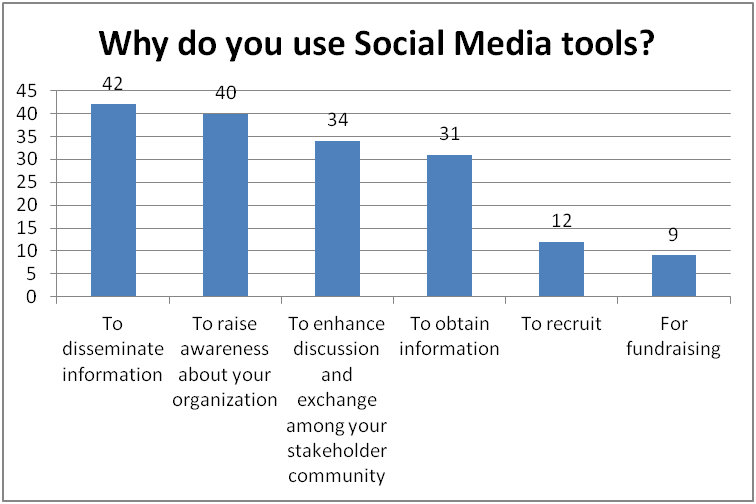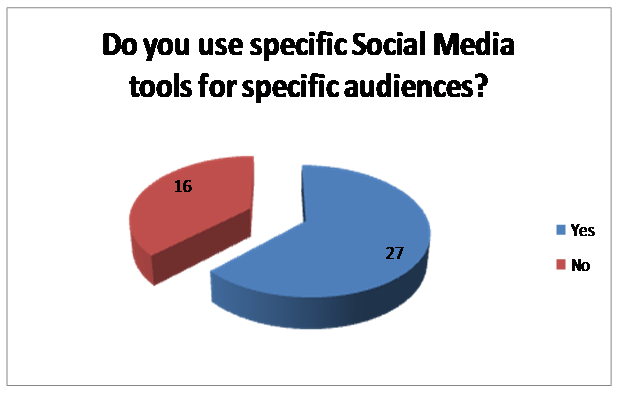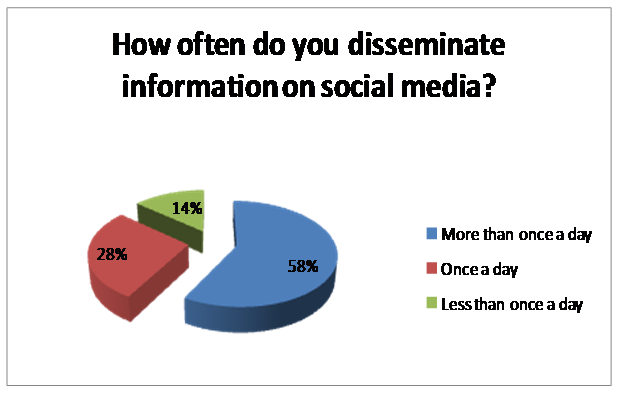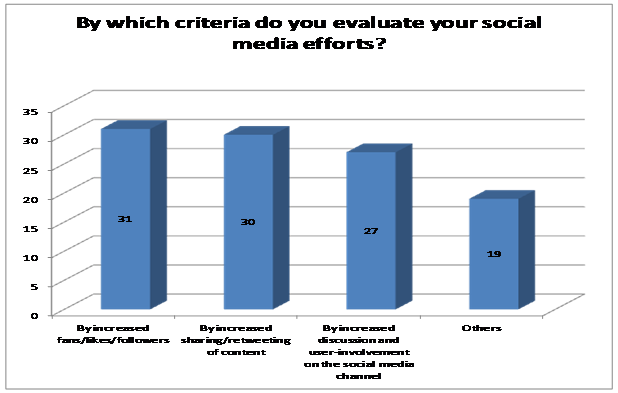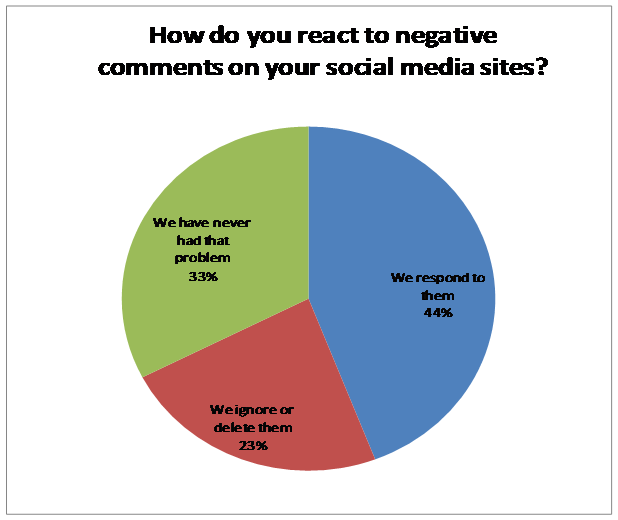UN-SPIDER conducted a Social Media Survey to understand the basic structure of Social Media use in non-profit organizations world-wide. A focus was put on the following questions:
- Why do non-profit organizations use social media tools?
- Which social media tools are mainly used by non-profit organizations?
- Who do non-profit organizations target with Social Media tools?
- How do non-profit organizations manage and evaluate their Social Media activity?
During 14 days, 41 non-profit organizations on both the local and international level kindly contributed to the survey. All organizations that participated in the survey, already use Social Media in one way or the other. The respondents are all international (both governmental and non-governmental) organizations. Most of them are United Nations bodies. All participants from non-governmental organizations work either in the field of social development or emergency management.
Please find below a couple of main findings. If you would like to get more into detail, please refer to the complete set of answers to the survey (xls-file, 57 Kb). We have rendered all answers anonymous.
Why Social Media?
95% of the respondents pick more than three reasons to use social media.
11 organizations are using social media for other purposes than those listed. The examples of such purposes are to campaign, to respond to specific queries and to keep in touch with specific entities.
"Disseminate information" is the main goal of using Social Media, followed by "raising awareness" about the organization. Enhancing discussion and obtaining information are also goals for a majority of the respondents.
What kind of information?
Activities and News of the organization is the information mainly disseminated.
Announcement of events and general news are as well disseminated by a lot of organizations.
Other types of information disseminated are surveys, statistics, photos or videos.
Which Social Media tools?
41 and 39 respondents (from 41 respondents) use Facebook and Twitter, respectively.
A majority of the respondents (80 percent) use all of the three following social media: Facebook, Twitter and Youtube.
Beside these top three tools, the respondents use: blogs, Flickr and Linkedin the most, followed by Google+, Tumblr, Instagram and Pinterest.
Who is the target group?
To effectively optimize the social media effort, identifying the target group is essential. The result of the survey shows that the target groups greatly depend on the goals and aims of the organizations. "The general public" is the most frequent answer.
24 organizations specified tools for certain groups of audiences, namely: Facebook and Youtube are described as the main tools for reaching the general public, while
Dissemination strategies
From 41 respondents, approximately 56 percent (or 23 respondents) plan their use of social media and 51 percent or 21 respondents plan the use according to a specific time table.
Evaluation strategies
67 percent of the respondents regularly evaluate their social media efforts, whilst 33 percent do not. 53 percent of the respondent are using a combination of the three choices (a) by increased fans/likes/followers, (b) by increased sharing/retweeting of content, and (c) by increased discussion and user-involvement on the social media channel to evaluate their social media efforts. 21 percent are using two criteria and 7 percent uses only one criteria.
14 respondents evaluate by other criteria: quality of comments, interaction with the audiences and traffic from the social media to the official websites.
16 respondents specify the evaluation tools. Amon them are Tweetreach, Hootsuite, Bitmarks, Allfacebookstate.com, Google analytics. Bit.ly, social baker, hastags.org, Klout, Symplur, Socialloomph as well as the analytical function provided by each social media site such as Facebook Insight.
Dealing with criticism
The survey shows that many organizations have never had negative comments before. Among those who have dealt with critical or negative comments, the majority openly deals with them by answering the comment.
Benefits?
51 percent of respondents believe that the use of Social Media has benefited their organizations to a degree. 46 percent say that it has significantly benefited their organization. Only 1 respondent is not sure about the issue.
Do you want to share further information with us? Please feel free to contact us via our social media sites: Facebook and Twitter. Thank you!
